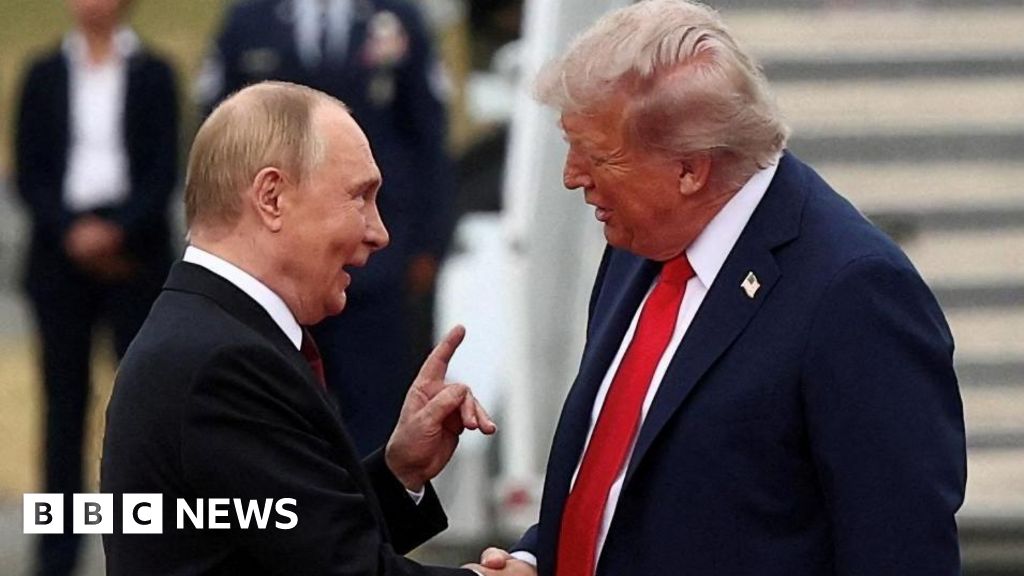The White House has confirmed that there are currently "no plans" for a meeting between US President Donald Trump and Russian President Vladimir Putin in the immediate future, despite earlier indications that such a summit might take place soon. This clarification comes after Trump had announced last Thursday that he and Putin would hold talks in Budapest within two weeks to discuss the ongoing war in Ukraine. However, the anticipated high-level dialogue now appears to be on hold amid growing tensions and unresolved differences between the two countries.
In the lead-up to the proposed summit, a preparatory meeting was scheduled between US Secretary of State Marco Rubio and Russia’s Foreign Minister Sergei Lavrov. This meeting was intended to lay the groundwork for the Trump-Putin talks. Yet, the White House subsequently reported that Rubio and Lavrov had a "productive" phone call, and as a result, the in-person meeting was deemed unnecessary. No further explanation was provided by the White House regarding why the talks were postponed or canceled, but it is widely believed that the complexities and discrepancies in the peace proposals have stalled progress.
The core issue appears to be the widening gulf between the US and Russia’s positions on peace conditions in Ukraine. While the US and its allies have pushed for a ceasefire and negotiations based on freezing the current front lines, Russia has insisted on more stringent demands that seem untenable for Kyiv and its Western supporters. These demands include full Russian sovereignty over the Donbas region in eastern Ukraine and the demilitarization of Ukraine, which are considered maximalist and unacceptable by the Ukrainian government.
The background to these developments includes a telephone conversation between Trump and Putin the day before Trump hosted Ukrainian President Volodymyr Zelensky at the White House. Reports from the meeting with Zelensky indicated tensions, with some sources describing the encounter as a "shouting match." According to these reports, Trump urged Zelensky to consider ceding large parts of the Donbas region—specifically the eastern areas of Donetsk and Luhansk—as part of a peace settlement with Russia. However, Zelensky has consistently maintained that Ukraine cannot relinquish control over the parts of Donbas it still holds, fearing that doing so would allow Russia to use the territory as a base for further military aggression.
On Monday, Trump publicly supported a ceasefire proposal that aligns with the positions of Kyiv and several European leaders, advocating for the conflict to be frozen along the current battle lines. Trump stated, "Let it be cut the way it is," adding, "I said: cut and stop at the battle line. Go home. Stop fighting, stop killing people." This approach is designed to halt active hostilities without territorial concessions, effectively creating a ceasefire that preserves the status quo.
Russia, however, has consistently rejected the idea of freezing the front lines as they currently stand. Kremlin spokesperson Dmitry Peskov emphasized that Russia’s stance remains unchanged, reiterating Moscow’s demand for the full withdrawal of Ukrainian forces from the contested eastern regions. Russian Foreign Minister Sergei Lavrov further elaborated on Tuesday that Moscow is only interested in a "long-term, sustainable peace," implying that a temporary ceasefire would not satisfy Russia’s objectives. Lavrov stressed the need to address the "root causes of the conflict," a phrase often used by the Kremlin to refer to its maximalist conditions, such as the recognition of Russian sovereignty over Donbas and Ukraine’s demilitarization—positions that Kyiv and Western countries firmly reject.
Meanwhile, European leaders and President Zelensky issued a joint statement on Tuesday, emphasizing that any serious peace talks must begin with a freeze of the current front line. They accused Russia of not being "serious" about peace negotiations, highlighting the ongoing challenges in reaching a diplomatic solution.
The recent history of Trump-Putin engagements has been marked by frustration and limited progress. The two presidents last met in August during a hastily arranged summit in Alaska, which concluded without any substantive agreements. The White House’s decision to shelve plans for another meeting in Budapest may reflect a desire to avoid a repeat of that unproductive encounter.
A senior European diplomat, speaking to Reuters, suggested that Russia’s demands in the negotiations were too excessive, leading the Americans to conclude that no deal was achievable in the proposed Budapest summit. This sentiment aligns with observations that the fundamental differences between the two sides remain deep and unresolved.
Zelensky has described discussions about the current front line as the "beginning of diplomacy," a step that Russia appears to be resisting. According to

